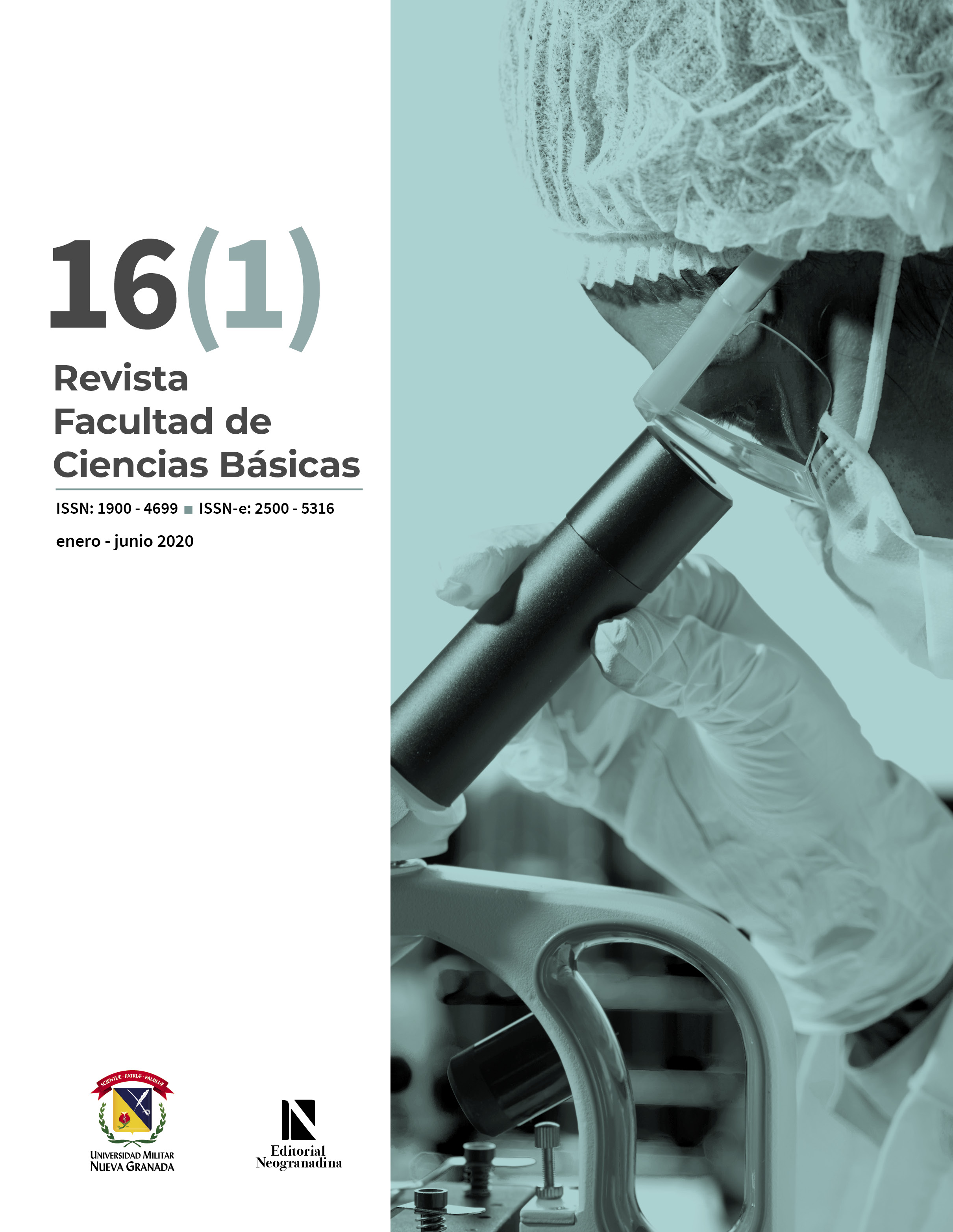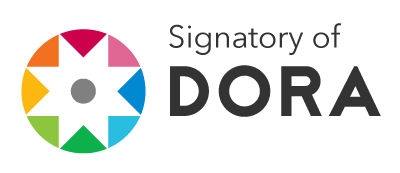Flower resources used by the native Bombus atratus (Hymenoptera: Apidae) bumblebee under greenhouse and open field conditions in the Sabana de Bogotá, Colombia
Abstract
The Bombus atratus native bumblebee is an important pollinator of agricultural interest crops. The study of their biology and their breeding in captivity has been the research topic of our group for more than a decade. Until now, the sources of food resources used by the colonies raised under the protocol of the research group were unknown, which is why this work was carried out. Colonies were located in the greenhouse and in the open field. A total of 105 pollen loads from worker corbiculae were collected: 85 from the greenhouse condition and twenty from the open field condition, which were processed using the acid acetolysis method. Thirty-six pollen types were identified, fifteen of which were named as important sources of pollen and nectar in the diet of B. atratus. 42% of the diet is made up of species of the Solanaceae family, 26% of the Myrtaceae family and 25% of different species of arvenses. The colonies located both in the open field and in the greenhouse share most of the sources of flower resources, however, some resources were more exploited than others due to their availability in each area. The flower resources that were most frequently found within the pollen loads were: Brassica rapa L., Raphanus sativus L., Trifolium repens L., Trifolium pratense L., Eucalyptus globulus Labill, Solanum quitoense Lam. y Solanum lycopersicum L.
Downloads
References
C. Kremen y R. S. Ostfeld, "A call to ecologists: measuring, analyzing and managing ecosystem services", Front. Ecol. Environ., vol. 3, n.o 10, pp. 540-548, 2005.
N.O. M. Waser y J. Ollerton, Plant-Pollinator interactions. From specialization to generalization. Chicago: The University of Chicago Press, 2006.
C. Carvell, D. Roy, S. Smart, R. Pywell, C. Preston y D. Goulson, "Declines in forage availability for bumblebees at a national scale", Biol. Conserv., vol. 132, pp. 48-489, 2006. https://doi.org/10.1016/j.biocon.2006.05.008
S. Colla y L. Packer, "Evidence for decline in eastern North American bumblebees (Hymenoptera: Apidae), with special focus on Bombus affinis Cresson", Bio. Conserv., vol. 17, pp. 1379-1391, 2008. https://doi.org/10.1007/s10531-008-9340-5
D. Goulson, G. C. Lye y B. Darvill, "Decline and conservation of bumble bees", Ann. Rev. Entomol., vol. 53, pp. 191-208, 2008. https://doi.org/10.1146/annurev.ento.53.103106.093454
Convention on Biological Diversity, Conference of the parties COP 5. Decision V/5. II: international initiative for the conservation and sustainable use of pollinators, 2000. [En línea]. Disponible en: http://www.cbd.int/decision/cop/?id=7147.
K. Winter et al., Importation of non-native bumble bees into North America: potential consequences of using Bombus terrestris and other non-native bumble bees for greenhouse crop pollination in Canada, Mexico and the United States. San Francisco: North American Pollinator Protection Campaign (NAPPC), 2006.
C. Morales, M. Arbetman, S. Cameron y M. Aizen, "Ecological replacement of a native bumble bee by invasive species", Front. Ecol. Environ., vol. 11, pp. 529-534, 2013. https://doi.org/10.1890/120321
J. S. Moure y G. A. R. Melo, "Bombini Latreille, 1802", En Catalogue of Bees (Hymenoptera, Apoidea) in the neotropical region-online version, J. S. Moure, D. Urban y G. A. R. Melo, Eds. Curiitiba, Brasil: Sociedade Brasileira de Entomologia, 2012. [En línea]. Disponible en: http://www.moure.cria.org.br/catalogue
A. Liévano, R. Ospina y G. Nates, "Contribución al crecimiento de la taxonomía del género Bombus en Colombia (Hymenoptera: Apidae)", Trianea. Acta Cient. Tecno. Inder., vol. 5, pp. 221-233, 1994.
A. Abrahamovich y N. O. Díaz, Bumble bees of the neotropical region (Hymenoptera: Apidae)", Biota Colomb., vol. 3, n.o 2, pp. 199-214, 2002.
S, Corbet, I. Williams y J. Osborne, "Bees and the pollination of crops and wild flowers in the European community", Bee World, vol. 72, pp. 47-59, 1991. https://doi.org/10.1080/0005772X.1991.11099079
K. Delaplane y D. Mayer, Crop pollination by bees. Londres: CABI publishing, 2000. https://doi.org/10.1079/9780851994482.0000
P. Cruz, M. T. Almanza y J. R. Cure, "Logros y perspectivas de la cría de abejorros del genero Bombus en Colombia", Rev. Facul. Cienc. Bás., vol. 3, pp. 49-60, 2007.
M. T. Almanza, "Management of Bombus atratus bumblebees to pollinate Lulo (Solanum quitoense L.), a native fruit from the Andes of Colombia", tesis doctoral, Cuvillier Verlag Gottingen, Germany, 2007.
J. Aldana, R. J. Cure, M. T Almanza, D. Vecil y D. Rodriguez, "Efecto de Bombus atratus (Hymenoptera: Apidae) sobre la productividad de tomate (Lycopersicon esculentum Mill.) bajo invernadero en la Sabana de Bogotá, Colombia", Agron. Colomb., vol. 25, n.o 1, pp. 62-72, 2007.
L. Camelo, L. Díaz, J. R. Cure y M. T. Almanza, "Morfología floral de la uchuva y comportamiento de visitas de la especie de abejorros Bombus atratus (Hymenoptera: Apidae) bajo invernadero", En resúmenes del XXXI Cong. Soc. Colomb. Entomol. Socolen, Bogotá, Colombia, 2004, pp. 86.
C.A. Poveda, D. Riaño, L. Aguilar y J.R. Cure, "Eficiencia de polinización de colonias huérfanas de Bombus atratus (Hymenoptera: Apidae) en fresa (Fragaria x ananassa) bajo cubierta", Acta Biol. Colomb., vol. 23, n.o 1, pp. 73-79, 2018, https://doi.org/10.15446/abc.v23n1.61648
J. Zuluaga, "Evaluación de la actividad polinizadora de Bombus atratus (Hymenoptera: Apidae) en un cultivo de mora de castilla (Rubus glaucus)", tesis de grado, Facultad de Ciencias Básicas y Aplicadas, Universidad Militar Nueva Granada, 2011.
D. Riaño, J. Pacateque, J. R. Cure y D. Rodríguez, "Comportamiento y eficiencia de polinización de Bombus atratus Franklin en pimentón (Capsicum annun L.) sembrado bajo invernadero", Rev. Colomb. Cienc. Hort., vol. 9, n.o 2, pp. 259-267, 2015, https://doi.org/10.17584/rcch.2015v9i2.4182
E. Romero, C. Pinilla, J. R., Cure, D. Riaño, S. Padilla y M. Aguilar, "Desarrollo de un escenario de campo para el estudio de especies nativas de abejorros (Bombus spp.) de los Andes colombianos (Hymenoptera: Apidae)", Rev. Facul. Cien. Bás., vol. 9, n.o 2, pp. 200-211, 2013. https://doi.org/10.18359/rfcb.346
F. Sánchez, M. C. Martínez-Habibe, S. Díaz, N. O. Medina, J. Riaño y M. F. PaQui, "Biodiversidad en un campus universitario en la Sabana de Bogotá: inventario de plantas y tetrápodos", Centro de Museos. Bolet. Cient., vol. 19, pp. 186-203, 2015.
J. Pacateque, P. Cruz, M, Aguilar y J. R. Cure, "Efecto de la alimentación vía bolsillo en etapas tempranas de desarrollo de Bombus atratus (Hymenoptera, Apidae)", Rev. Colomb. Entomol., vol. 38, pp. 343-346, 2012.
G. Erdtman, "The acetolysis method: a revised description", Sv. Bot. Tidskr. Lund., vol. 54, n.o 4, pp. 561-564, 1960.
C. I. Silva et al., Catálogo polínico das plantas usadas por abelhas no Campus da USP de Ribeirão Preto, Ribeirão Preto: Holos Editor, 2014.
Rede de Catálogos Polínicos online RCPol (2013). [En línea]. Disponible en: http://www.rcpol.org.br
I. Montero y R. Tormo, "Análisis polínico de mieles de cuatro zonas montañosas de Extremadura", An. Asoc. Palinól. Leng. Esp., vol. 5, pp. 71-78, 1990.
A. Maurizio y J. Louveaux, Pollens de plantes mellifères d'Europe, París: Union des Groupements Apicoles Français, 1965.
J. D. Lobatón, J. R. Cure y M. T. Almanza, "Fenología y oferta floral de trébol rojo Trifolium pratense (Fabales: Leguminosae) en praderas de kikuyo (Penissetum clandestinum (Poales: Poaceae), como fuente de alimento para Bombus atratus (Hymenoptera: Apoidea) en Cajicá, Colombia", Rev. Facul. Cien. Bás., vol. 8, pp. 18-27, 2012.
A. Brian, "The pollen collected by Bumble-bee", J. Anim. Ecol., vol. 20, n.o 2, pp., 191-194, 1951. https://doi.org/10.2307/1538
E. Hennig y J. Ghazoul, "Plant-pollinator interactions within the urban environment", Persp. Plant Ecol., Evol. System., vol. 13, pp. 137-150, 2011. https://doi.org/10.1016/j.ppees.2011.03.003
D. Rubio, "Disponibilidad, uso y preferencia por lo recursos florales en una comunidad de abejorros (Hymenoptera: Apidae: Bombus) en el páramo de Chingaza", tesis de maestría, Facultad de Ciencias, Universidad Nacional de Colombia, 2012.
T. Roulston, J. Cane y S. Buchmann, "What governs protein content of pollen: pollinator preferences, pollen-pistil interactions, or phylogeny?", Ecol. Monogr., vol. 70, n.o 4, pp. 617-643, 2000. https://doi.org/10.1890/0012-9615(2000)070[0617:WGPCOP]2.0.CO;2
M. Hanley, M. Franco, S. Pichon, B. Darvill y D. Goulson, "Breeding system, pollinator choice and variation in pollen quality in British herbaceous plants", Funct. Ecol., vol. 22, pp. 592-598, 2008. https://doi.org/10.1111/j.1365-2435.2008.01415.x
C. Weiner, A. Hilpert, M. Werner, K. Linsenmair y N.O. Blüthgen N, "Pollen amino acids and flower specialization in solitary bees", Apidol., vol. 41, pp. 476-487, 2010. https://doi.org/10.1051/apido/2009083
S. Leonhardt y N. O. Blüthgen, "The same, but different: pollen foraging in honeybee and bumblebee colonies", Apidol., vol. 43, pp. 449-464, 2012. https://doi.org/10.1007/s13592-011-0112-y
J. Free, Insect pollination of crops, Londres: Academic Press, 1970.
M. C. Telleria, "Palynological analysis of food reserves found in a nest of Bombus atratus (Hym. Apidae)", Grana, vol. 37, pp. 125-127, 1998. https://doi.org/10.1080/00173139809362655
E. Camillo y C. A. Garófalo, "Analysis of the niche of two sympatric species of Bombus (Hymenoptera, Apidae) in southeastern Brazil", J. Trop. Ecol., vol. 5, pp. 81-92, 1989. https://doi.org/10.1017/S0266467400003242
L. B. De Faria, K. P. Aleixo, C.A. Garófalo, V. L Imperatriz y C. I. Da Silva, "Foraging of Scaptotrigona aff. depilis (Hymenoptera, Apidae) in an urbanized area: seasonality in resource availability and visited plants", Hindawi Publ. Corp. Psy., vol. 2012, 12 pp., 2012, https://doi.org/10.1155/2012/630628
K. P. Aleixo, L. B. De Faria, C. A. Garófalo, V. L. Imperatriz y C. I. da Silva, "Pollen collected and foraging activities of Frieseomelitta varia (Lepeletier) (Hymenoptera: Apidae) in an urban landscape", Sociobiol., vol. 60, n.o 3, pp. 266-276, 2013. https://doi.org/10.13102/sociobiology.v60i3.266-276












